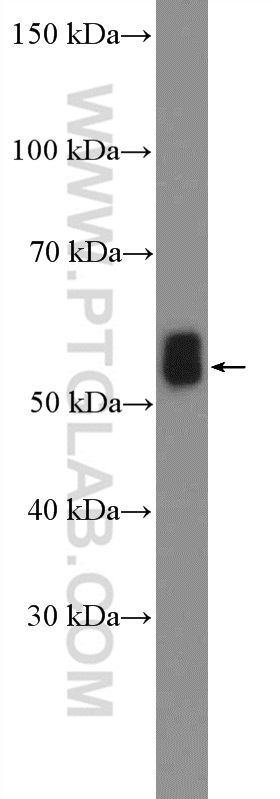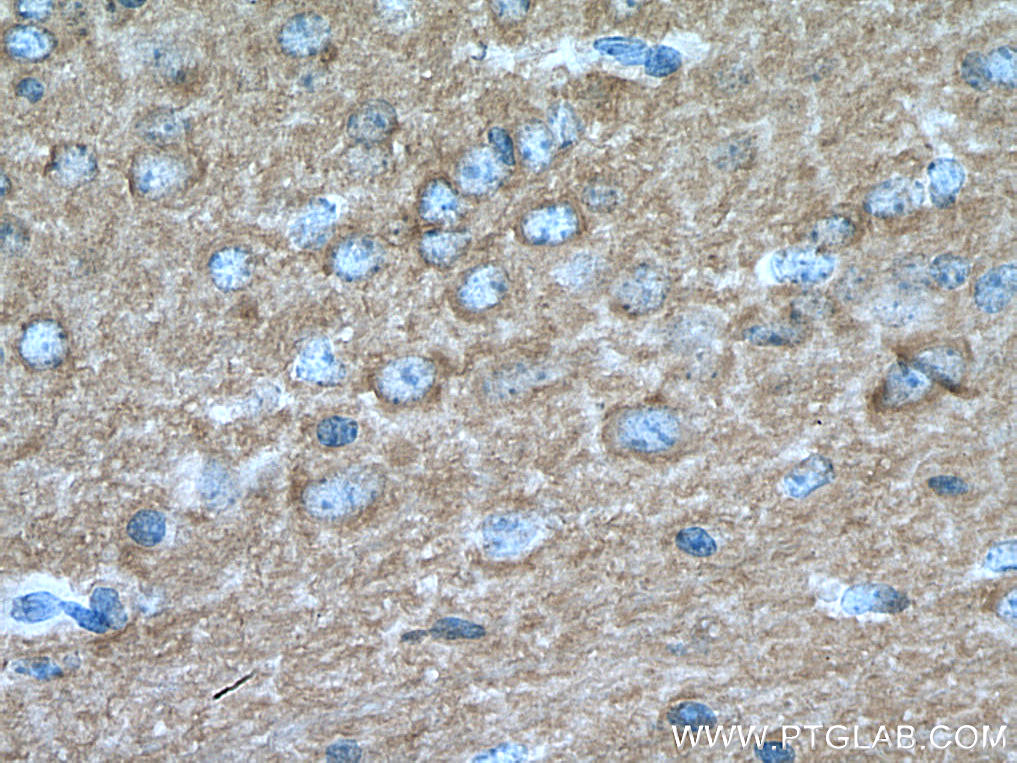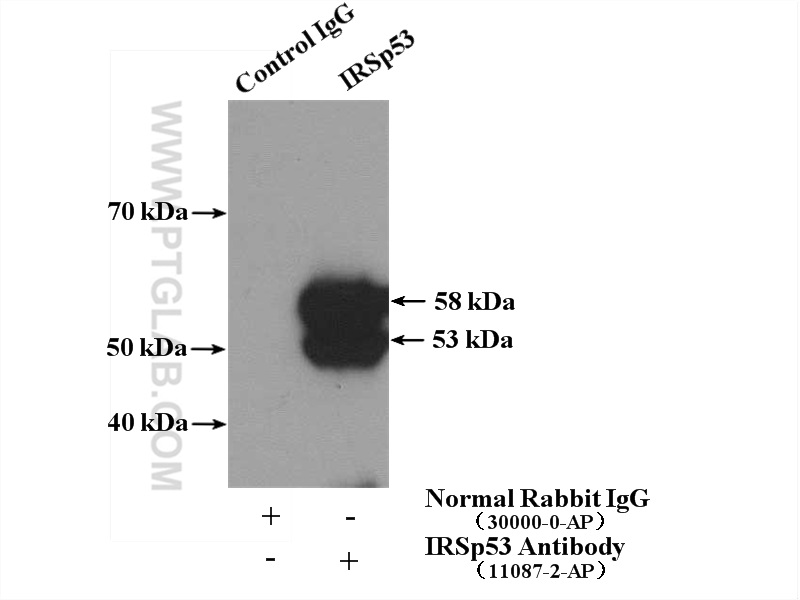验证数据展示
经过测试的应用
| Positive WB detected in | mouse brain tissue, human brain tissue, rat brain tissue |
| Positive IP detected in | mouse brain tissue |
| Positive IHC detected in | mouse brain tissue, human brain tissue, human breast cancer tissue Note: suggested antigen retrieval with TE buffer pH 9.0; (*) Alternatively, antigen retrieval may be performed with citrate buffer pH 6.0 |
推荐稀释比
| 应用 | 推荐稀释比 |
|---|---|
| Western Blot (WB) | WB : 1:500-1:1000 |
| Immunoprecipitation (IP) | IP : 0.5-4.0 ug for 1.0-3.0 mg of total protein lysate |
| Immunohistochemistry (IHC) | IHC : 1:50-1:500 |
| It is recommended that this reagent should be titrated in each testing system to obtain optimal results. | |
| Sample-dependent, Check data in validation data gallery. | |
产品信息
11087-2-AP targets IRSp53 in WB, IHC, IF, IP, ELISA applications and shows reactivity with human, mouse, rat samples.
| 经测试应用 | WB, IP, IHC, ELISA Application Description |
| 文献引用应用 | WB, IHC, IF, IP |
| 经测试反应性 | human, mouse, rat |
| 文献引用反应性 | human, mouse, hamster |
| 免疫原 | IRSp53 fusion protein Ag1552 种属同源性预测 |
| 宿主/亚型 | Rabbit / IgG |
| 抗体类别 | Polyclonal |
| 产品类型 | Antibody |
| 全称 | BAI1-associated protein 2 |
| 别名 | BAI associated protein 2, BAI1 associated protein 2, BAIAP2, BAP2, Fas ligand associated factor 3, FLAF3, Insulin receptor substrate p53, IRS 58, IRSp53, IRSp53/58, Protein BAP2 |
| 计算分子量 | 61 kDa |
| 观测分子量 | 53 kDa |
| GenBank蛋白编号 | BC014020 |
| 基因名称 | IRSp53 |
| Gene ID (NCBI) | 10458 |
| RRID | AB_2063075 |
| 偶联类型 | Unconjugated |
| 形式 | Liquid |
| 纯化方式 | Antigen affinity purification |
| UNIPROT ID | Q9UQB8 |
| 储存缓冲液 | PBS with 0.02% sodium azide and 50% glycerol , pH 7.3 |
| 储存条件 | Store at -20°C. Stable for one year after shipment. Aliquoting is unnecessary for -20oC storage. |
背景介绍
IRSp53 (also known as BAIAP2) is a multi-domain adaptor protein that originally identified as a 58/53-kDa substrate of insulin-receptor kinase in the hamster (PMID: 10332026). As a BAI1-binding protein, IRSp53 plays an important role in linking between membrane and cytoskeleton in the process of neuronal growth (PMID: 10343108). IRSp53 is necessary for Cdc42-mediated reorganization of the actin cytoskeleton and for Rac1-mediated membrane ruffling. Alternatively spliced isoforms of IRSp53 exist. IRSp53 has been implicated in several psychiatric disorders, including autism spectrum disorders (ASDs), schizophrenia, and attention deficit/hyperactivity disorder (ADHD) (PMID: 26275848).
实验方案
| Product Specific Protocols | |
|---|---|
| WB protocol for IRSp53 antibody 11087-2-AP | Download protocol |
| IHC protocol for IRSp53 antibody 11087-2-AP | Download protocol |
| IP protocol for IRSp53 antibody 11087-2-AP | Download protocol |
| Standard Protocols | |
|---|---|
| Click here to view our Standard Protocols |
发表文章
| Species | Application | Title |
|---|---|---|
Hum Mol Genet Interactome network analysis identifies multiple caspase-6 interactors involved in the pathogenesis of HD. | ||
Biol Cell Extracellular vesicles containing the I-BAR protein IRSp53 are released from the cell plasma membrane in an Arp2/3 dependent manner. | ||
Proteomics Proteomics Analysis Identifies IRSp53 and Fascin as Critical for PRV Egress and Direct Cell-Cell Transmission. | ||
Lab Invest FAK Signaling Induces the Onset of Proteinuria via FAK Signaling in a Mouse Model of Lung Cancer | ||
Elife Proteomic characteristics reveal the signatures and the risks of T1 colorectal cancer metastasis to lymph nodes |









